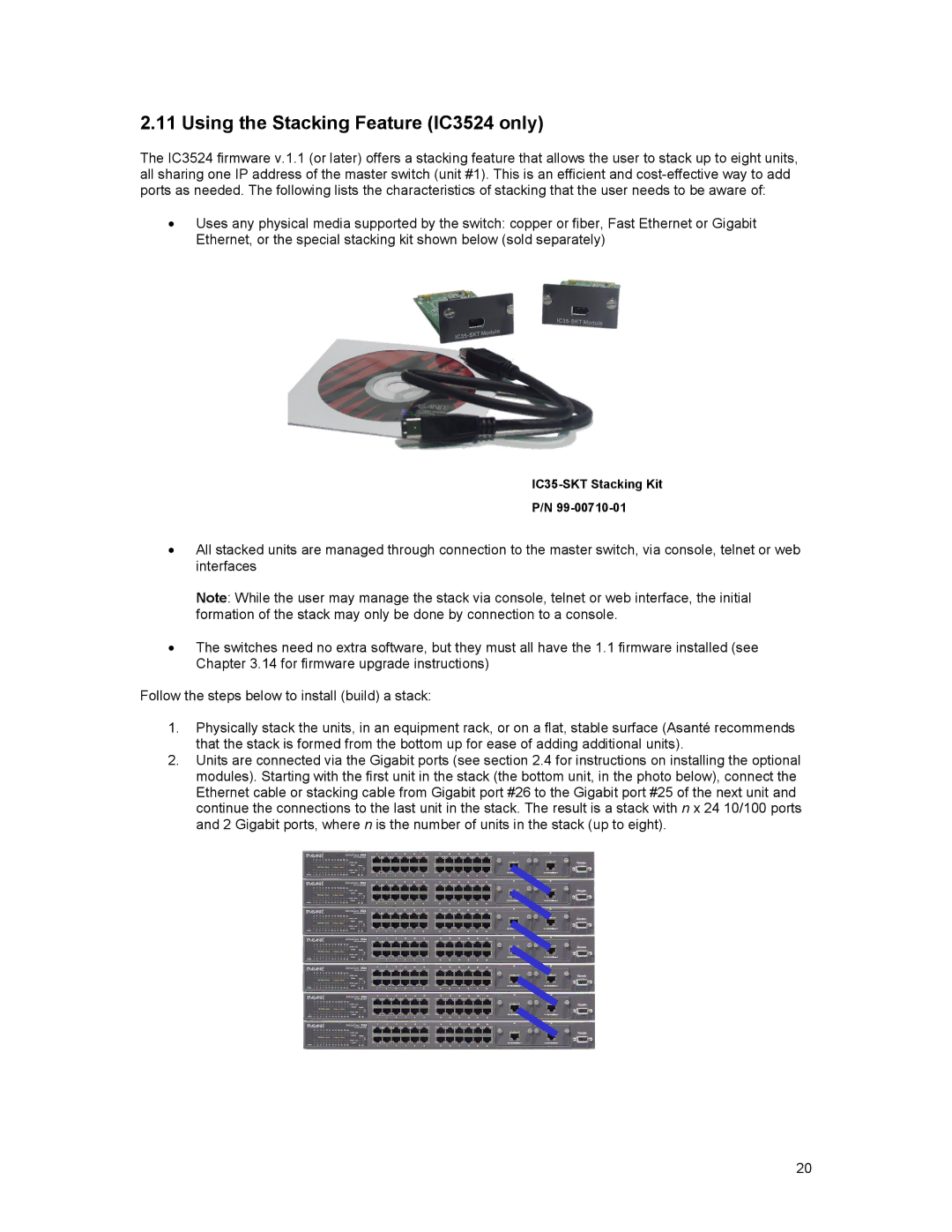
2.11 Using the Stacking Feature (IC3524 only)
The IC3524 firmware v.1.1 (or later) offers a stacking feature that allows the user to stack up to eight units, all sharing one IP address of the master switch (unit #1). This is an efficient and
•Uses any physical media supported by the switch: copper or fiber, Fast Ethernet or Gigabit Ethernet, or the special stacking kit shown below (sold separately)
P/N
•All stacked units are managed through connection to the master switch, via console, telnet or web interfaces
Note: While the user may manage the stack via console, telnet or web interface, the initial formation of the stack may only be done by connection to a console.
•The switches need no extra software, but they must all have the 1.1 firmware installed (see Chapter 3.14 for firmware upgrade instructions)
Follow the steps below to install (build) a stack:
1.Physically stack the units, in an equipment rack, or on a flat, stable surface (Asanté recommends that the stack is formed from the bottom up for ease of adding additional units).
2.Units are connected via the Gigabit ports (see section 2.4 for instructions on installing the optional modules). Starting with the first unit in the stack (the bottom unit, in the photo below), connect the Ethernet cable or stacking cable from Gigabit port #26 to the Gigabit port #25 of the next unit and continue the connections to the last unit in the stack. The result is a stack with n x 24 10/100 ports and 2 Gigabit ports, where n is the number of units in the stack (up to eight).
20
